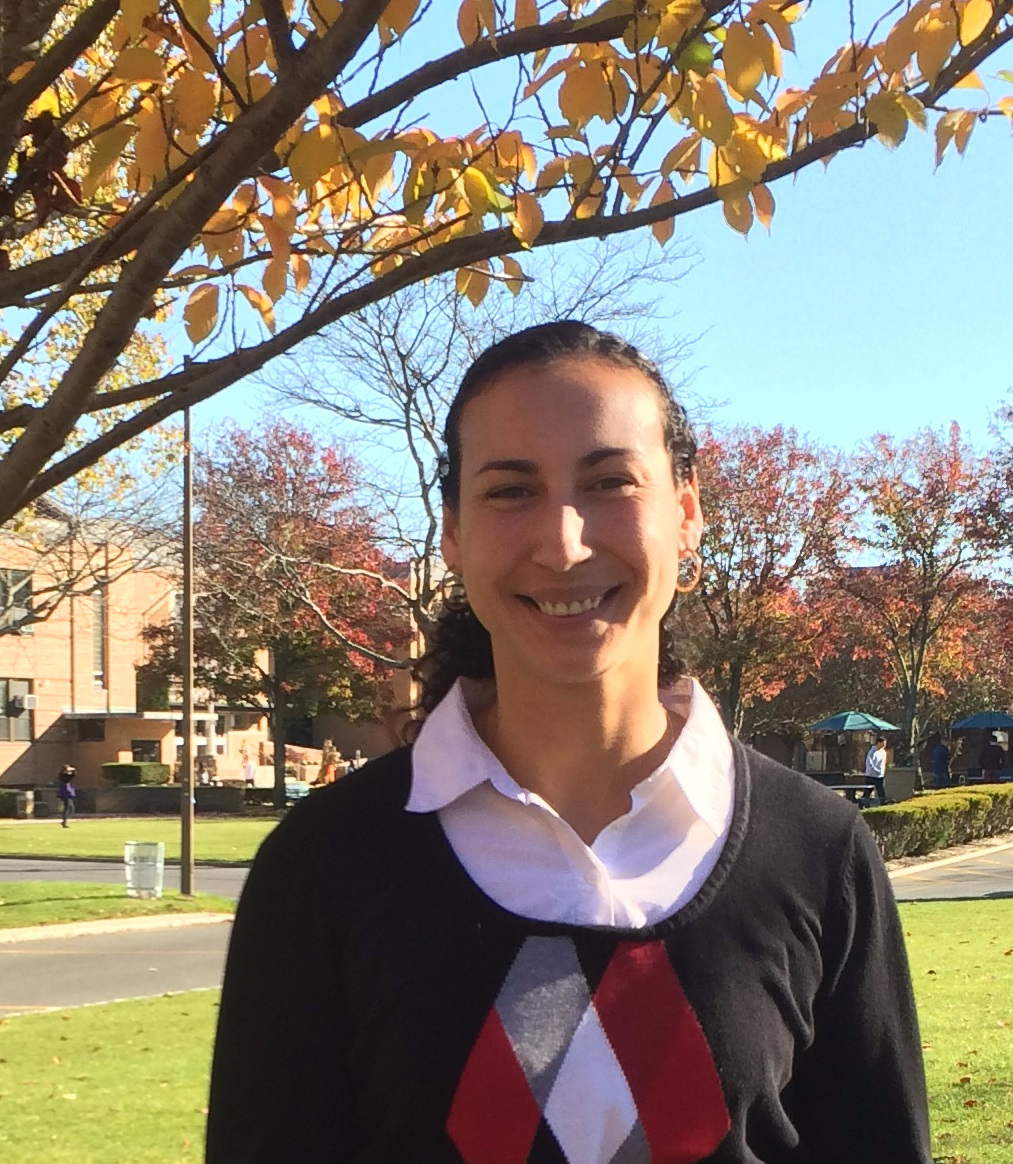CIE Researcher of Distinction, November 2014
Jennifer Martinez
Each month, the Center for Inclusive Education showcases the outstanding research being conducted by one of our talented scholars in our Research Café series. In addition, we recognize this scholar as a Researcher of Distinction and share the details of his/her journey to becoming an accomplished scholar. This month's Researcher of Distinction is Jennifer Martinez, PhD candidate in the Department of Molecular & Cellular Biology. Jennifer presented her talk. ‘BRIDGING THE GAP: Investigating the Interaction Between Gap Junction Proteins and Cell Signaling in the Ocular Lens’ on Wednesday, November 19, 2014.
Jennifer's Path Into Research
Jennifer Martinez was born in Syosset, NY. A Long Island native, she grew up in Bay Shore and transferred to Bellport for her senior year of high school - class of 2003. In her senior year, Jennifer was a National Fastpitch Coaches Association (NFCA) All-American softball player and Academic All-American. She was also awarded the NYS Gatorade Softball Player of the Year in 2003. Jennifer’s athletic and academic achievements led her to Stony Brook University on an athletic scholarship to play softball. She soon after transferred to Saint Joseph’s College in Patchogue, NY and was a three-time Academic All-American. She graduated Magna Cum Laude in 2008 with a BS degree in Biology and a NYS Secondary Education Certification. Jennifer first became interested in research during her undergraduate Developmental Biology laboratory course when she worked on planarian regeneration and studied the properties of neoblasts (stem-like cells that give planaria their extraordinary regenerative ability). Since then, Jennifer has been interested in pursuing a career that incorporates teaching and researching.
Jennifer's Current Research
Describe the work you will be presenting for your Research Café.
Mutations in either of the two gap proteins in the ocular lens has been shown to lead to the formation of cataracts. Gap junctions are intercellular channels composed of connexin subunits that organize into hexameric complexes that are inserted into the plasma membrane. These complexes at the plasma membrane can then dock with complexes of adjacent cells to form an intercellular channel that allows for the passage of ion and small molecules. My experiments use techniques in electrophysiology and molecular biology to investigate the role of the P13K signaling pathway in regulating the function of gap junctions formed by Cx50 and Cx46.
What was the deciding factor for you to come to Stony Brook for your graduate studies?
Stony Brook University was the only place I applied. I knew it was a great research institution.
What are your future goals?
My goal is to teach biology at a small liberal arts institution.
What do you enjoy most about research?
The critical thinking. I love puzzles and brain games that challenge me to think outside the box. Research definitely requires going outside the box to fit the puzzle pieces together.
